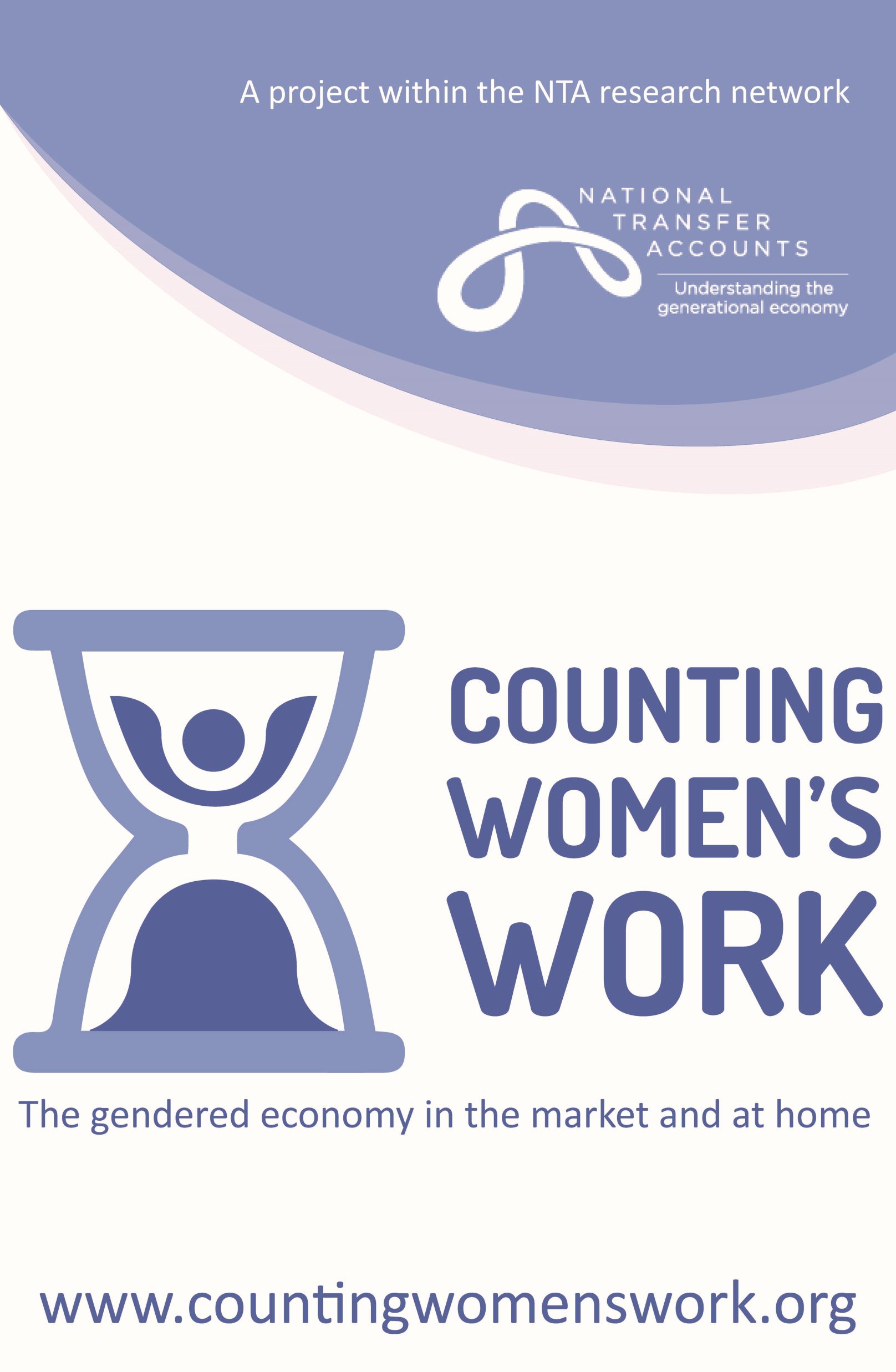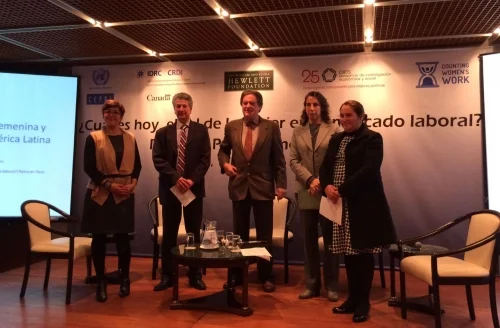The age-profile of invisible transfers: The true size of asymmetry in inter-age reallocations
Affiliated CWW researchers have publisehd "The age-profile of invisible transfers: The true size of asymmetry in inter-age reallocations" by Róbert Gál, Endre Szabó, and Lili Vargha.
Note that this article is written by CWW-affiliated researchers who use comparable methods but were part of a different project.
Gál, R., Szabó, E., and Vargha, L., 2015. "The age-profile of invisible transfers: The true size of asymmetry in inter-age reallocations". The Journal of the Economics of Ageing, 5: 98-104.
ABSTRACT:
We argue that the institutional composition of funding consumption in the two dependent sections of the lifecycle, childhood and old age, are different. To put it sharply, children are raised by their parents, the elderly rely on society. Since the reallocation of resources within and between households are not registered in National Accounts, the majority of the resources transferred to children are not visible in contrast to resources flowing to the elderly, which are almost entirely observed in public statistics. For our analysis we apply a recent extension of National Accounts, called the National Transfer Accounts, which include private transfers; and a further, experimental extension, the National Time Transfer Accounts, which quantifies the value of time transferred among household members in the form of unpaid household labor. We show that less than one third of the full transfer package flowing to children is registered in the National Accounts and another roughly one third is made visible by the National Transfer Accounts. The remaining one third, which is the value of parents caring for their children, is made visible by the National Time Transfer Accounts. The corresponding shares in funding old age are quite different: 90 percent is observed in public statistics and the two accounting extensions unfold only a bit less than 10 percent.
Analysis of non-remunerated production in Costa Rica
Costa Rica team leader Pamela Jiménez-Fontana has published the article “Analysis of Non-Remunerated Production in Costa Rica” in the Journal of the Economics of Ageing.
Jiménez-Fontana, P., 2015. "Analysis of non-remunerated production in Costa Rica". Journal of the Economics of Ageing, 5: 45-53.
ABSTRACT:
Disaggregating national production by sex might lead to the misleading conclusion that women’s contribution to the economy is significantly lower than men’s. National Accounts fail to measure the time people dedicate to non-remunerated production because there is no explicit economic compensation. However, non-remunerated production contributes indirectly to the economy, and it represents part of the real cost of taking care of others. The opportunity cost of dedication to non-remunerated production depends highly on the educational level and personal preferences. This article estimates the real contribution of men and women to the Costa Rican economy by calculating labor income and non-remunerated production by age and sex. In addition, the article disaggregates the main activities of non-remunerated production by educational level.
DPRU Report: Status of Women in the South African Economy
Now available online: the full report co-authored by the DPRU on the "Status Of Women In The South African Economy", which includes draft results from the South African Counting Women's Work research (see section 7 of the report).
Now available online: the full report co-authored by the DPRU on the "Status Of Women In The South African Economy", which includes draft results from the South African Counting Women's Work research (see section 7 of the report).
This is the first Government Report on the Status of Women in the South African economy, since the Ministry in the Presidency Responsible for Women was established in May 2014, and serves as a baseline document for the work to promote the socio-economic empowerment of women and gender equality.
This report articulates the current situation, while providing insight into some of the trends that are discernible in the data on women in the South African economy. It provides a step towards building a reliable knowledge base and disaggregated data that will inform women's socio-economic empowerment, and the advancement of gender equality in the country.
The Minister in the Presidency Responsible for Women commissioned the Development Policy Research Unit to develop the report on the status of women in the South African economy in March 2015.
To view the full report, click here.
View recent media clippings from the Mail & Guardian mentioning the Report:
14th August 2015: Promoting economic growth through education
7th August 2015: Rights will be eroded by new chiefly laws
Radio Canada interviews CWW researcher
Estela Rivero of Counting Womens’s Work spoke to Pablo Gómez Barrios of Radio Canada International.
Estela Rivero (right) spoke to Pablo Gómez Barrios of Radio International Canada in September 2014.
In Mexico, the economic crisis of the 1980s propelled many women into the labour market. However, women are more likely to be located in the lowest paid jobs and, as a result, their contribution to the country's economy appears to be lower than that of men.
As in other countries around the world, though, Mexican women continue to perform substantial amounts of work in the home, including cooking, cleaning and care work, even if they are employed outside of the home. These activities are not recorded as part of the national economy in conventional measures of economic production (e.g. they are not included in GDP), but represent an important contribution to their households' welfare.
Pablo Gómez Barrios spoke with Estela Rivero, Counting Women's Work researcher for Mexico.
Click here for the full interview.
Latin America Training
The Counting Women's Work training workshop for Latin American teams was held as a side meeting at the Sixth Congress of ALAP.
The Counting Women's Work training workshop for Latin American teams was held as a side meeting at the Sixth Congress of ALAP (La Asociacion Latinoamericana de Poblacion / Latin American Population Association) at the Pontificia Universidad Catolica del Peru, Lima, from 11 to 13 August 2014. Latin American CWW country teams, as well as other country teams interested in the CWW research, attended. These include teams and representatives from Chile, Colombia, Costa Rica, El Salvador, and Mexico. The slides used in the workshop are linked below.
Day 1: National Transfer Accounts by Sex
Day 2: National Time Transfer Accounts - Production
Latin America Launch
The Counting Women's Work Project was formally launched in Latin America in Lima, Peru, on Friday 15 August 2014. The launch included a panel discussion
The Counting Women's Work Project was formally launched in Latin America in Lima, Peru, on Friday 15 August 2014. The launch included a panel discussion entitled "What is the role of women in the labour market today? Challenges in Peru and Latin America" and was hosted by the CIES, in association with the United Nations Economic Commission for Latin America and the Caribbean (ECLAC) and CWW funders the Hewlett Foundation and the International Development Research Centre (IDRC).
Participants in the discussion included Paulo Saad (Head of Population and Development, CELADE); Estela Rivero (principal investigator for the Mexican CWW research); Carolina Trivelli (former Minister of Development and Social Inclusion in Peru); and Guiselle Romero (researcher in the Department of Management Sciences, PUCP). The discussion was led Norma Vidal Añaños, Deputy Minister for Social Services, Ministry of Development and Social Inclusion.
Download the presentations (in Spanish):
Categories
Tags
- Africa 3
- Asia 3
- Audio 2
- Brazil 1
- Burkina Faso 2
- Colombia 10
- Costa Rica 10
- Covid19 2
- Cross-country 19
- El Salvador 1
- Europe 5
- Example Code 1
- Fertility 2
- Gender Dividends 3
- Ghana 4
- Hispanic ethnicity 1
- Human Capital 1
- Hungary 1
- India 3
- Kenya 2
- Latin America 7
- Mauritius 2
- Methodology 6
- Mexico 4
- Policy-related 10
- Senegal 5
- Slides 10
- Slovenia 1
- South Africa 9
- South Korea 2
- Spain 2
- Spanish language 4
- Turkey 1
- United States 3
- Uruguay 2
- Video 7
- Vietnam 4
- Web Conference 4















